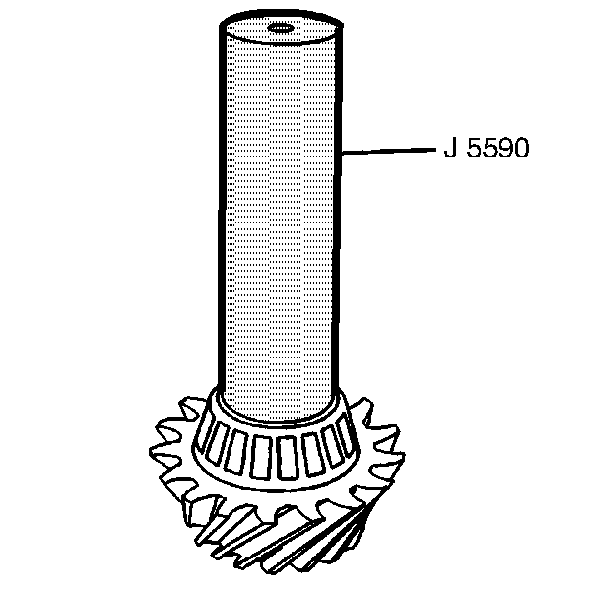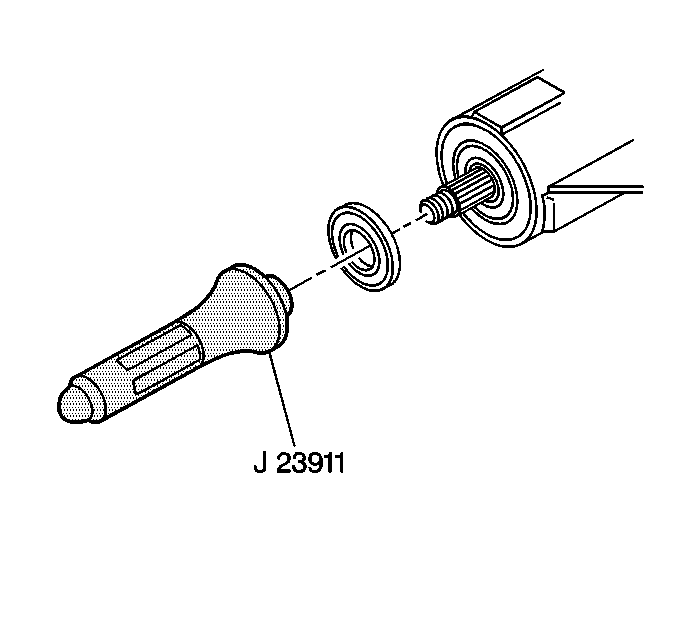For 1990-2009 cars only
Tools Required
| • | J 5590 Rear Pinion Bearing Cone Installer |
| • | J 23911 Pinion Oil Seal Installer |
| • | J 8614-01 Companion Flange Holder |
- Ensure that the bearing cups have been installed. For bearing cup installation, refer to Pinion Depth Adjustment .
- Install the selective shim between the inner bearing and the shoulder on the gear.
- Install the inner pinion bearing using the J 5590 .
- Install a new collapsible spacer. Lubricate the pinion bearings using axle lubricant.
- Install the pinion to the axle housing.
- Install the outer pinion bearing onto the pinion using the J 5590 . When you drive the bearing onto the pinion, hold the pinion forward from inside the case.
- Install the pinion oil seal using the J 23911 .
- Install the pinion flange by tapping the flange using a soft-faced hammer until a few threads are shown.
- Install the pinion washer and nut while holding the pinion flange using the J 8614-01 .
- Tighten the nut until the pinion end play is just taken up. Rotate the pinion while tightening the nut in order to seat the bearings. When no end play is present in the pinion, inspect the preload torque.
- Remove the J 8614-01 . Inspect the pinion preload by rotating the pinion using an inch pound torque wrench. Preload should be at or below 2.7-3.6 N·m (24-32 lb in) on new bearings, or within 1.0-1.4 N·m (8-12 lb in) for used bearings.
- If the preload torque is below the specified values, continue torquing the nut in small increments. Inspect the preload after each tightening. Each tighten increases the bearing preload by several pounds. If the bearing preload is exceeded, remove the pinion and install a new collapsible spacer.
- Once the specified preload has been obtained, rotate the pinion several times in order to ensure that the bearings have seated. Recheck the preload, and adjust if necessary.
- Install the differential case. Refer to Backlash Adjustment .

Drive the bearing on until the cone seats on the pinion shim.


Notice: Use the correct fastener in the correct location. Replacement fasteners must be the correct part number for that application. Fasteners requiring replacement or fasteners requiring the use of thread locking compound or sealant are identified in the service procedure. Do not use paints, lubricants, or corrosion inhibitors on fasteners or fastener joint surfaces unless specified. These coatings affect fastener torque and joint clamping force and may damage the fastener. Use the correct tightening sequence and specifications when installing fasteners in order to avoid damage to parts and systems.
